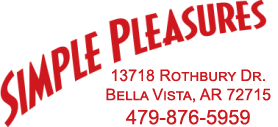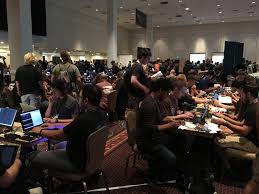The team offsite meeting that didn’t work
“They obviously had not given it any thought before they scheduled it.”, she said with annoyance. “It was right before a big project was due. They put us in a small hotel meeting room with no windows, seats touching and in long rows where you had to climb over what seemed like a hundred people just to run to the restroom. All they did was interview new executives that had nothing to do with our area and one of them spoke for over an hour about “things on his mind” but, those things had no immediate or short term action or us. It was a waste of our time and company resources.”Felicia was recounting her experience at a team offsite meeting for her retail office position.
Many of us have experienced meetings like this – that seem to have no agenda, no understood purpose or information that can help the attendees. How do companies avoid having their employees walk away from their offsite like Felicia did?
Strong planning, nets results.
If you have little to no experience in planning a meeting offsite, you might not know how to pull it all together. This blog will walk you through the steps and provide some key resources to make it easier and help your team feel like they accomplished something.
What are the goals and objectives you need to achieve?
Do you have very specific deliverables that you need to achieve like developing a budget or a new product line? Maybe you need to solve a problem or problems you are having in your business? These are just a few questions that can be asked to determine what you want to accomplish with a team offsite meeting. Once you have ideas pulled together, here are some ideas to develop them further:
- Prioritize your ideas by the level of impact to your company and available time to solve the problem
- Solicit ideas from your team, or ask for help prioritizing
- Get ideas/prioritization from your leadership (if you have a boss, you will need their approval later too)
Gather feedback from the team if they have other items that need to be covered. Don’t feel bad if you can’t get to each and every idea but, including the team in the development process also helps with buy-in and helps them have a sense of ownership.
Team/Business goals
Establishing a goal for your offsite is critical to determine its success. But what is a goal?
I like the definition used by Mindtools that suggests setting a goal must be S.M.A.R.T.:
S – Specific – Your goal is clearly defines what you want to accomplish and people understand it.
M – Measurable – You have measures in place to know how if you achieved your goal.
A – Achievable/Agreed upon – Are you trying to solve something that takes months, years or just more days than you have?
R – Relevant – Can your team help you achieve these goals and are they important to them too?
T – Timebound – Can you accomplish these by the end of the meeting or, just solve one segment of the bigger issue?
A few examples of SMART goals are:
- By the end of the offsite, we will have a final draft of the 2017 budget that leadership approved
- Each day of the offsite, we will complete one training, celebrate one moment of accomplishment together and spend an hour coming up with at least one new product or service to use next year.
- By the end of the offsite, we will have created an outline for the five-year strategy plan and have assigned sections to leaders in the company to complete by the next company offsite meeting
These goals don’t have to be complicated but, they do need to provide enough information that allows you to know what you are trying to complete and if it was successful.
The only times that the SMART tool might not help you is with soft goals. Things like building camaraderie amongst your team mates, celebrating the accomplishments of people and team development in soft skills. While some of these can be measured, they are also a bit subjective so, your approach may work for some on your team but not others.
Then, once you have goals established, begin determining what objectives you need to do to accomplish these.
Objectives
Objectives get you from where you are today, to your goal. Let’s use the first goal at the top as an example “complete a draft of the 2017 budget that leadership approves”. What would we need to complete that?
- Complete 3rd quarter P&L
- Gather final projections from the teams for 4th quarter
- Pull the last five year’s plans and p&ls
- Confirm new expenses over $1,000
- Define business focus for the year (which product or service will we promote the most?)
From this list of objectives, you can determine what you need to get done before the offsite meeting or during the meeting to accomplish your goal by the end. That leads us to the next stage.
Plan, Plan, Plan
This part is actually the most time consuming and the most important. In order to ensure you accomplish your goal(s), you need to create a plan that takes out as many risks as possible and sets you and your team up for success. There are several elements required to build your strong offsite meeting plan.
1. Set an agenda that meets your goals
Have you ever been in a meeting that went nowhere and you had no idea the purpose? I think we all have. Agendas are an extremely important tool that can align the attendees on a common goal and help ensure the goal gets met. It’s the same with a team offsite meeting. We know that it is easy to fill time with unimportant conversation but, how do we create an agenda that meets goals?
First, determine what your time constraints are, if any. Let’s say for this example we can only have a one-day meeting from 8am to 5pm, nine hours of agenda time.
Second, we think through our objectives and where the bulk of the conversation/presentation will be needed.
Let’s say we need to create the 2017 budget, we want to hear from the boss about what is on her mind and we want to celebrate a record-setting sales month. If we use the objectives above, the bulk of the time needs to be spent on “defining the new business focus for the year”, as the other objectives (old P&Ls and projections) can be created before the meeting. I would think we need to spend about three hours discussing the new business focus and maybe one hour of that can be breaking them out into smaller teams to brainstorm specific ideas or focus areas. That is three hours of time covered.
Third, we need to figure out how much the new focus of the year would cost us which could take about an hour of number crunching.
That gets us to 4 hours.
Fourth, I need to give the boss an hour to talk about their focus areas and things top of mind.
That is 5 hours
Fifth,we need to figure out what makes people feel celebrated. What about a really nice cake from a local bakery and giving out awards for the team’s accomplishments? That would take another hour.
That is 6 hours total.
Finally, what about breaks and lunches and a little flex time in case something runs over? It’s important to have a little time buffer in your agenda just in case the conversation is productive but goes a little long. You don’t want to cut off a great conversation in order to move to the next topic, as it could loose a great idea or prohibit you from solving that big problem.
- 1.5 hours for lunch
- 2 breaks, 20 minutes each
- 10-minute delay in the morning if traffic is bad and someone is running late
- 40 minutes of flex time in the day or, everyone can go home early
That gets us to 9 hours.
Now I need to decide what order everything goes in and put it down on paper as a great first draft.
2. Decide who should attend
Now that you have a draft agenda, determine who needs to be in the room as an attendee/participant and who needs to run a section of the meeting?
Obviously, we need the boss there but maybe she only needs to attend at certain sections like her speech in the morning and at the end when we report out the budget? Do you need the whole team there or just a partial group?
You may have read a blog a few weeks ago “Is a Business Offsite Meeting Worth the Cost?” that referenced a Harvard Business Review article about this. It basically says that too many people in the room not only causes added costs to the company but, also causes confusion in conversations, in establishing proper level of approvals in the room and also can throw the meeting off balance because you may have too many people in a room from one team but not another.
Make a list of all the individuals that need to attend and what role they would play in the meeting or how they would add value. If they have no role, decide if it is really important for them to be there.
3. Pick a location
We talked about the importance of a great meeting location in our last blog on the topic “Is a Business Offsite Meeting Worth the Cost?” so, I won’t cover this one in detail. I will add however, that investing in a great location to get your team in a different frame of mind and in a creative space like Simple Pleasures, can help bring ideas and conversations that your office or an empty meeting space can not.
Also, make sure that the venue you select has all the space you need for your team. Remember Felicia’s example above where everyone was squeezed in a room. That uncomfort can take away from focus on the topic and objectives.
4. Think about food, travel and activities/dress code
These are the things that most people complain most about in an offsite meeting. Here are a few tips on each of the topics to help you plan:
Food
- Determine dietary restrictions of your team and ideally, select fo0d that the majority enjoys (see survey recommendations in our last offsite blog to collect information quickly).
- What is your food budget and what meals and beverages are you serving?
- Morning: If you have a morning meeting, providing coffee, hot tea and water is appropriate. If you begin your meeting earlier than office hours or, people normally have access to a cafeteria at the office, you may want to provide at least a continental breakfast of pastries and fresh fruits.
- Mid morning: Having some healthy nuts, fruits or leftovers from your breakfast would help those that get the late morning stomach rumbles and prevent people from feeling antsy right before lunch.
- Lunch: Provide options that fit the dietary restrictions of your team. If you are unsure of their style preferences, stick to items that are neutral like a varied sandwich tray, chips and veggies. If you have a smaller group or know that the majority enjoy Mexican food, for example, you can have that catered in or work with your venue on options. When catering, make sure you confirm if they are bringing the plates, napkins and silverware or if you are supposed to provide those. Have extras onhand in case some break. Also, check and see if you might have extra guests join last minute. Better too much food than not enough so make sure you have plenty.
- Afternoon break: Again, it’s important to either provide afternoon snack foods or indicate to your team that you are only providing lunch. In our example, we are celebrating a great sales month so, we will be providing cake as an afternoon snack. If possible, make sure to have some healthier options available for those that are trying not to eat sweets.
Travel
It is important to provide very clear instructions to your offsite location. Typically, most people will use a navigation ap on their phones or cars to direct them to a specific location, however, these can sometimes lead people in the wrong direction or down a path that is blocked. Having a back-up option of detailed instruction in the invitation just in case, can prevent people from being late or not showing up at all.
Activities and Dress Code
No one likes to come to an offsite overdressed or underdressed so, it is important to communicate what the team should expect to wear, since they will not be in the office. If you are planning an outdoor activity, volunteering outside or expect the offsite location to be a bit breezy, let your team know so they can dress accordingly. Help them be in their most comfortable situation to produce better results and keep your team happy.
5. Confirm Details and Communicate
Finally, once you have all of the information pulled together and on paper, you will want to take one more look at it to see if there is any information missing. Has your agenda changed since you drafted it or do you need to change your list of attendees? If you need to receive approval on your plan, this is where you submit it to your manager and then communicate it to the team.
A few tips on communicating the information:
- Ensure that you have final approval on all elements of your meeting before you send them out so you aren’t overpromising anything. For example, you don’t want to get them excited that you are going to a fancy restaurant for a lunch or dinner when the budget only allows for fast food.
- Make sure to provide all the necessary details in an email, meeting planner or both. People differ in the ways they receive information and so, it is helpful to communicate it in multiple locations, just in case an email was not read or the meeting planner did not come through. You will also want to cover in staff meetings or other touch base methods.
- If there are specific pre-meeting action items for the team like collecting information on P&Ls, completing surveys or scheduling preparation meetings, this information needs to be bolded at the top of your communication or sent in a separate email so, it doesn’t get lost in all the event details. You want to provide plenty of notice for pre-meeting action items so everyone feels prepared when they come in the room.
- Lastly, schedule reminders before the meeting and when any premeeting information is due. Most email services allow you to set up and schedule emails to go out at a later date. Setting these reminders up in advance makes it easier on you and if you add yourself as a recipient, it’s a good reminder for you too.
Planning a team offsite meeting takes work and time but, it is rewarding when you walk away with your goals accomplished, a happy team and a better business plan ahead of you.






Comments are closed.